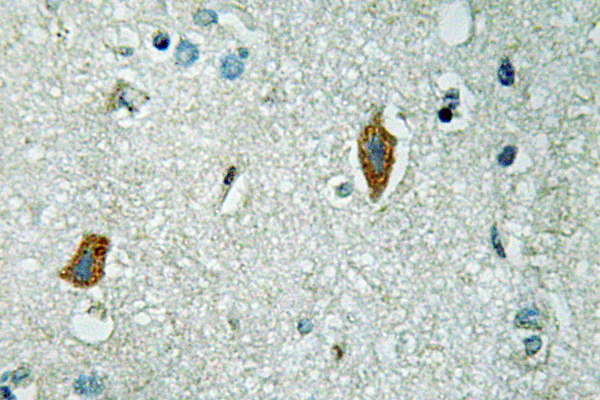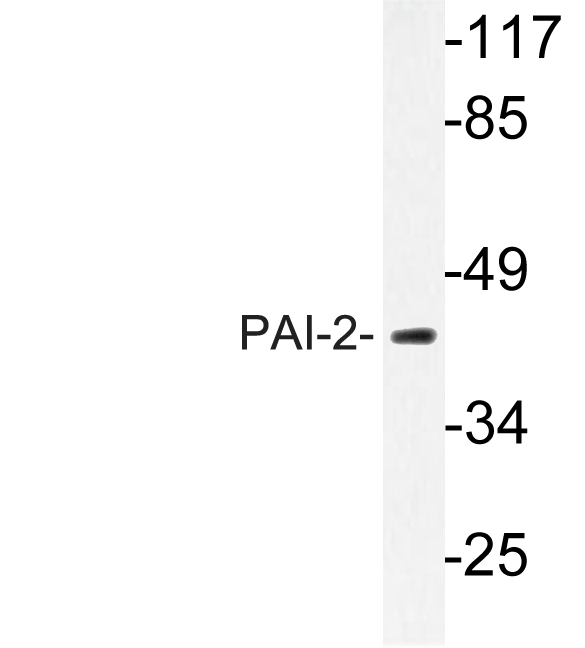PAI-2 Polyclonal Antibody
- 货号:YT3570
- 应用:WB;IHC;IF;ELISA
- 种属:Human;Rat;Mouse;
- 简介:
- >>Complement and coagulation cascades
- 蛋白名称:
- Plasminogen activator inhibitor 2
- 免疫原:
- The antiserum was produced against synthesized peptide derived from human PAI-2. AA range:258-307
- 特异性:
- PAI-2 Polyclonal Antibody detects endogenous levels of PAI-2 protein.
- 组成:
- Liquid in PBS containing 50% glycerol, 0.5% BSA and 0.02% sodium azide.
- 来源:
- Polyclonal, Rabbit,IgG
- 稀释:
- WB 1:500 - 1:2000. IHC 1:100 - 1:300. ELISA: 1:40000.. IF 1:50-200
- 纯化工艺:
- The antibody was affinity-purified from rabbit antiserum by affinity-chromatography using epitope-specific immunogen.
- 储存:
- -15°C to -25°C/1 year(Do not lower than -25°C)
- 其他名称:
- SERPINB2;PAI2;PLANH2;Plasminogen activator inhibitor 2;PAI-2;Monocyte Arg-serpin;Placental plasminogen activator inhibitor;Serpin B2;Urokinase inhibitor
- 背景:
- function:Inhibits urokinase-type plasminogen activator. The monocyte derived PAI-2 is distinct from the endothelial cell-derived PAI-1.,PTM:The signal sequence is not cleaved.,similarity:Belongs to the serpin family. Ov-serpin subfamily.,
- 功能:
- function:Inhibits urokinase-type plasminogen activator. The monocyte derived PAI-2 is distinct from the endothelial cell-derived PAI-1.,PTM:The signal sequence is not cleaved.,similarity:Belongs to the serpin family. Ov-serpin subfamily.,
- 细胞定位:
- Cytoplasm. Secreted, extracellular space.
- 组织表达:
- Brain,Monocyte,Placenta,

- Immunohistochemistry analysis of PAI-2 antibody in paraffin-embedded human brain tissue.

- Western blot analysis of lysate from MCF-7 cells, using PAI-2 antibody.





